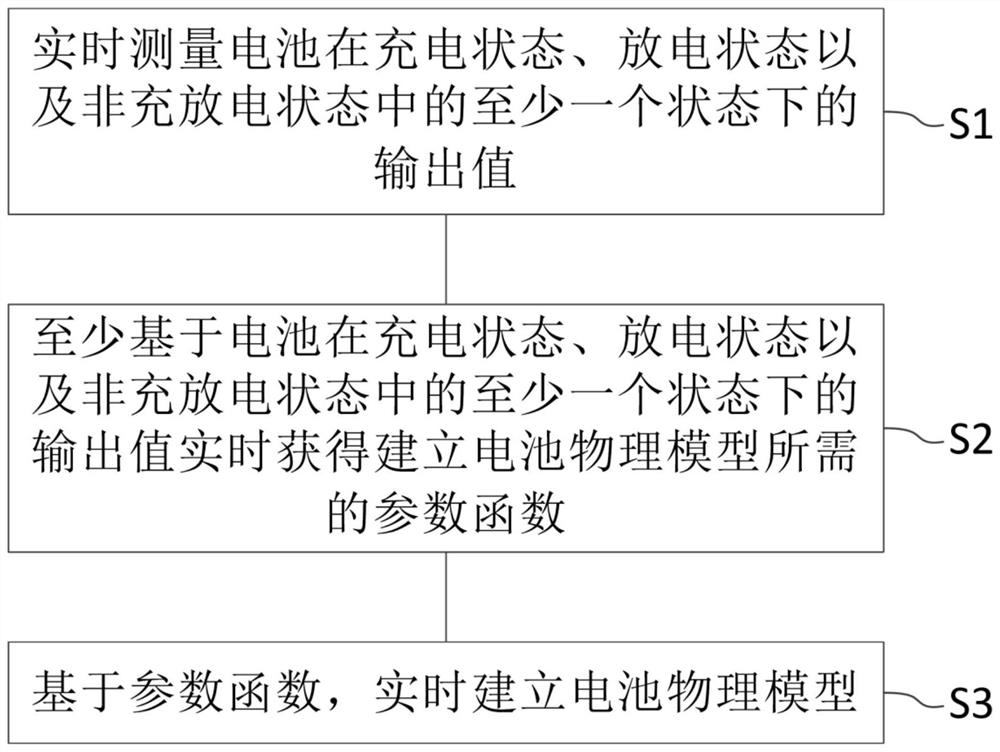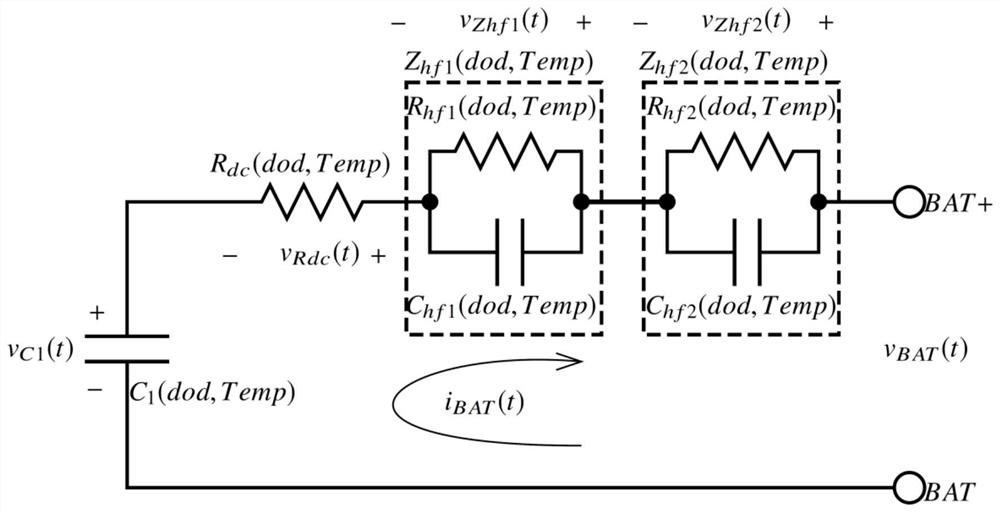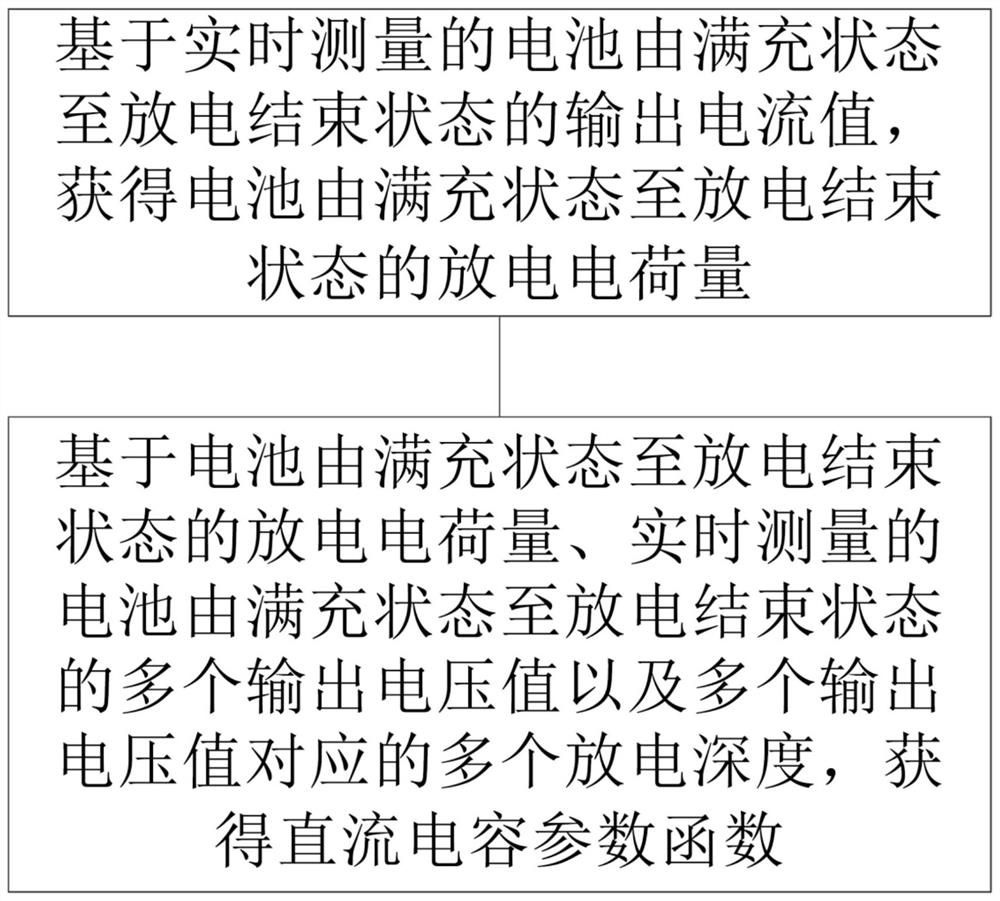Battery physical model real-time establishing method and updating method and battery monitoring equipment
A technology of physical model and establishment method, which is applied in the direction of measuring electricity, measuring electric variables, measuring devices, etc., and can solve problems such as battery physical model update, deviation, unfavorable battery management, use, etc.
- Summary
- Abstract
- Description
- Claims
- Application Information
AI Technical Summary
Problems solved by technology
Method used
Image
Examples
Embodiment Construction
[0069] The present disclosure will be further described in detail below with reference to the drawings and embodiments. It can be understood that the specific implementation manners described here are only used to explain relevant content, rather than to limit the present disclosure. It should also be noted that, for ease of description, only parts related to the present disclosure are shown in the drawings.
[0070] It should be noted that, in the case of no conflict, the implementation modes and the features in the implementation modes in the present disclosure can be combined with each other. The technical solutions of the present disclosure will be described in detail below with reference to the accompanying drawings and in combination with implementation manners.
[0071] Unless otherwise specified, the illustrated exemplary embodiments / embodiments are to be understood as exemplary features providing various details of some manner in which the technical idea of the pre...
PUM
 Login to View More
Login to View More Abstract
Description
Claims
Application Information
 Login to View More
Login to View More - Generate Ideas
- Intellectual Property
- Life Sciences
- Materials
- Tech Scout
- Unparalleled Data Quality
- Higher Quality Content
- 60% Fewer Hallucinations
Browse by: Latest US Patents, China's latest patents, Technical Efficacy Thesaurus, Application Domain, Technology Topic, Popular Technical Reports.
© 2025 PatSnap. All rights reserved.Legal|Privacy policy|Modern Slavery Act Transparency Statement|Sitemap|About US| Contact US: help@patsnap.com



